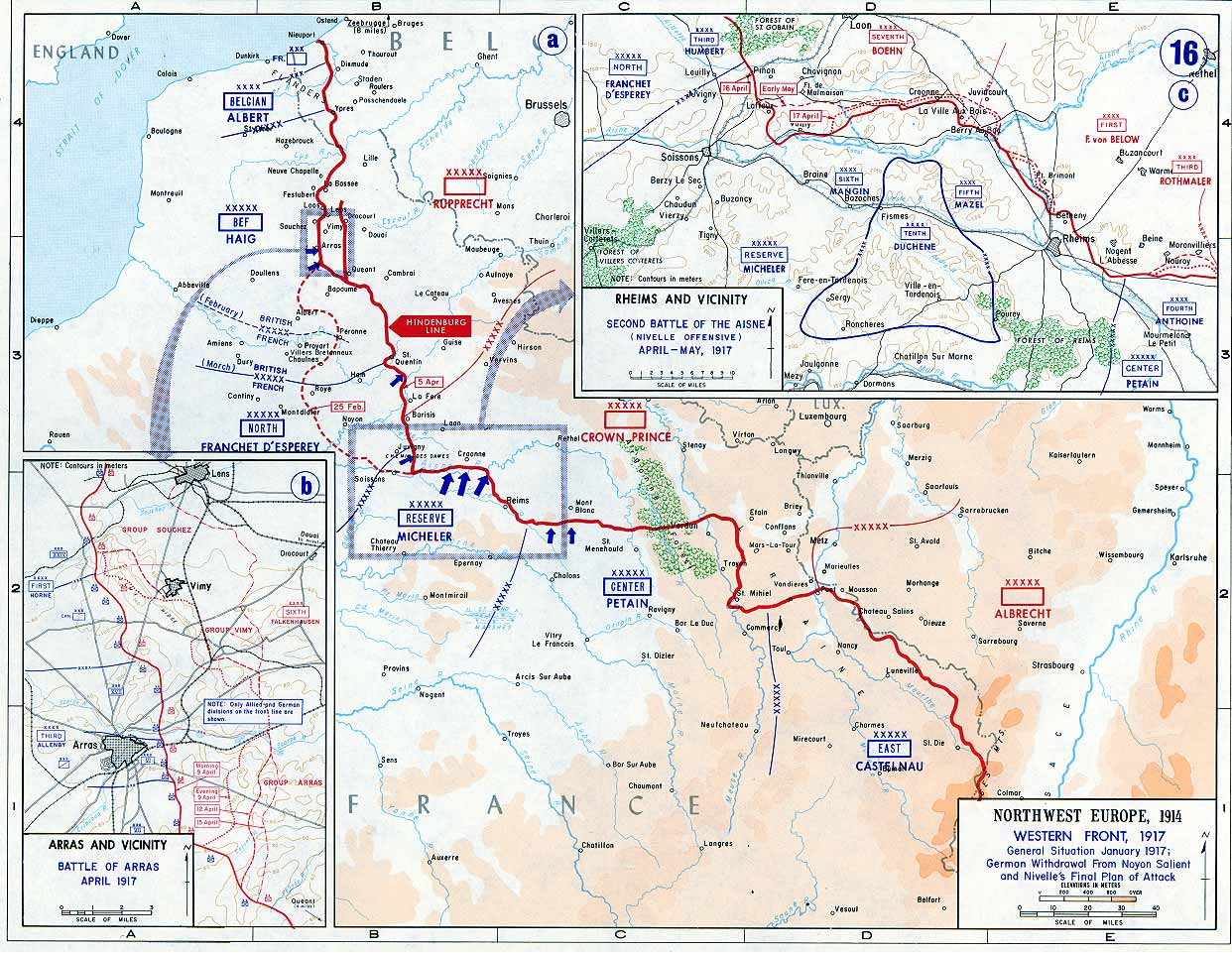

"Dan-Joe & Malcolm (WW1)" -- TOC
Ch. 8 - "Ypres Salient (March-June, 1916)"

What we have determined from their individual military records is that our heroes arrived in France on March 16th, 1916. On the 18th they were sent to join their unit, the 26th Canadian Battalion who were already on the line having arrived in France the previous Fall. Dan-Joe and Malcolm arrived to join their unit and were in the field on the 26th. From the War Diary we see that the men of the 26th were ready to take their turn in the trenches. The Weather is noted as being fine. In this staging area, in the back of the line, communal baths were happening. In come Dan-Joe and Malcolm. Things are not so bad. But wait.
It was just on March 26th, the War Diary reveals, that the 26th Battalion was moving up to the trenches to relieve the 22nd. (The place, best I can determine, was west of Poperinge; Steenvoorde is mentioned.) On the 27th, "Heavy bombardment" at 4:18 a.m. It took its toll "7 killed, 15 wounded." This was the first taste of War for our two heroes, whom we might assume were huddled together in a front-line trench. On the 28th through to the 30th, it is reported that the trenches were bombarded, day and night, and continued, "along our front and on communication trenches and breastwork. Working parties each night repairing damage inflicted. Weather fine."28
On April 2nd, the 26th Battalion was relieved. They were sent to the camp at "Reninghels" (Reninghelst).29 Guards are set up for "German prisoners." Ten days later, on the 12th, the 26th Battalion relieved the 19th who were in the trenches.30 Throughout this period it is noted that "working parties working on trenches." On the 19th, the Battalion (where the number is not mentioned, I mean the 26th) "Arrived in camp Reninghels." In the camp, there are the "usual platoon & Company parades." They relieved the 19th Battalion in front line on the night of 27th.
On May 1st, 1916, our boys are still in the trenches. "Gas alarm sounded at 11:30 pm all quiet by 2 am." On the 2nd, "heavily shelled for 2 hours" in afternoon. On the 4th, "Relieved by 28th" and the "Weather fine." Between the 5th to the 13th, "In camp near Reninghelst; "Divine Services" held; "Div. working parties" are out; "weather cloudy and showery"; Courses being given "Band Concert and special concert held for N.C.Os and men." A note for the 14th of May, shows that there was a "move to Dickebusch to Brigade Reserve." On the 16th, they were back in the trenches and were there until the 22nd.31 An entry during this time shows "Left Sector, St. Eloi [Elooi]." Further, "Excellent progress made with work on Tunnels, Spoilbank, also Dug-outs in Front and Support Lines." "Weather warm and fine." On the 23rd they were "Relieved by the 28th Canadians." Between the 24th to the 30th, at camp, again, Reninghelst, from which the Battalion "furnished Dist. Working Parties." Drills carried out; School for the men. On the 30th "Route March through Westout Re - Hide Corner." On the 31st, "Battalion relieved 28th Battalion in Trenches. Left Sector St. Eloi."
And so, we come to the month of June, in northern France.
And so we are brought up to date on Dan-Joe's military record, and note: June 10-20, 1916 - At "Royal Herbert HP." "GSW. left leg" Wound healed, transferred to "Woodcote Park." Between June 20th and July 2nd, Dan-Joe is at "Can. Con. Hosp - Discharged to C.C.A.C."33
"The summer season of 1916 was pleasant, and except for occasional showery days, was generally warm and dry. Roads dried up and cross-country tracks became quite dusty. Wild flowers bloomed in profusion, and the fragrance of wild roses reminded men of Canada and of more peaceful days. Birds flitted back and forth, bursting into song. Even in the front line area they appeared unconcerned with the noise and danger. Despite the heavy enemy bombardments of Ypres and the firing of nearby British guns, a family of young swans was being reared on the waters of Ypres Moat. The long summer days and shortened nights necessitated late evening reliefs at the front, and some curtailment of nightly activities. Dry trenches and dugouts resulted in vastly improved living conditions for front line garrisons, while firm soil facilitate the work on trenches and other defences. On hot days, however, when the sun beat down into their ditches, the troops sweltered and suffered in the stagnant air."32
On June 3rd, 1916, Dan-Joe and Malcolm were in the Front Trenches: "shelling and heavy activity." Then on the 8th, they move to "Railway Dug-Outs," near a French farm and remained there, ready to support other Canadian troops who were attacking "Hill 60." There they stayed to the 10th. While the details are forever missing, it was at this point that Dan-Joe was shot in the leg.
Or, GO TO
TABLE OF CONTENTS
Peter Landry
2015 (2018)